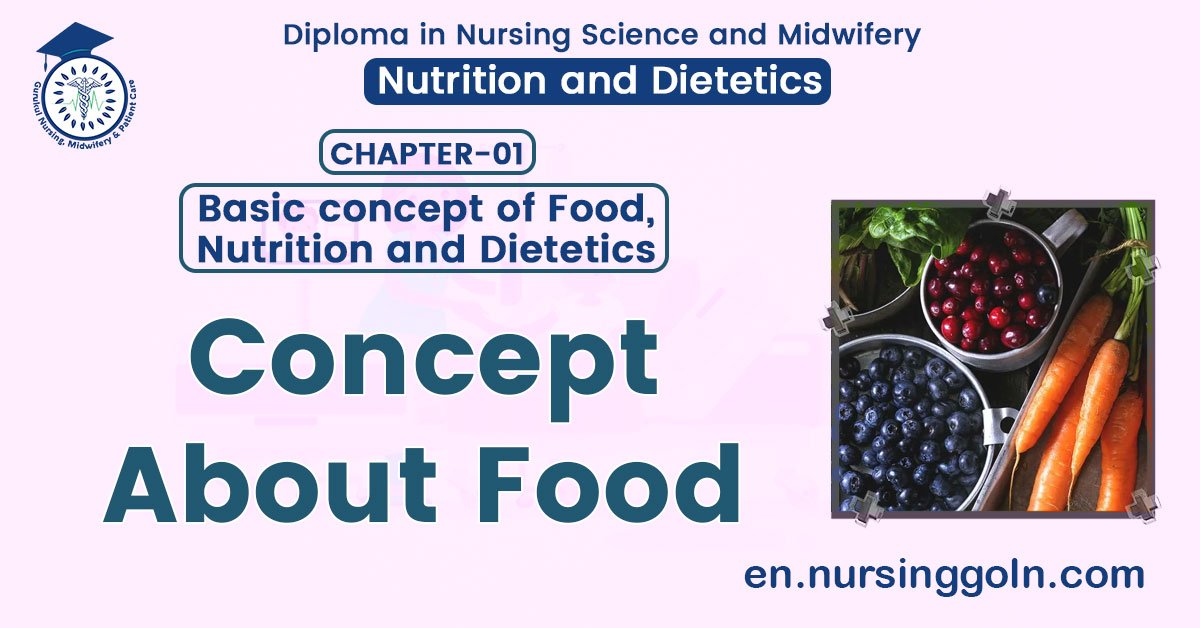Concept about Food – This book covers the entire syllabus of “Nutrition and Dietetics” prescribed by BNMC-for all Diploma in Nursing Science and Midwifery students. We tried to accommodate latest information and topics. This book is examination friendly setup according to the teachers’ lectures and examination’s questions. At the end of the book previous university questions are given. We hope in touch with the book students’ knowledge will be upgraded and flourished. The unique way of presentation may make your reading of the book a pleasurable experience.
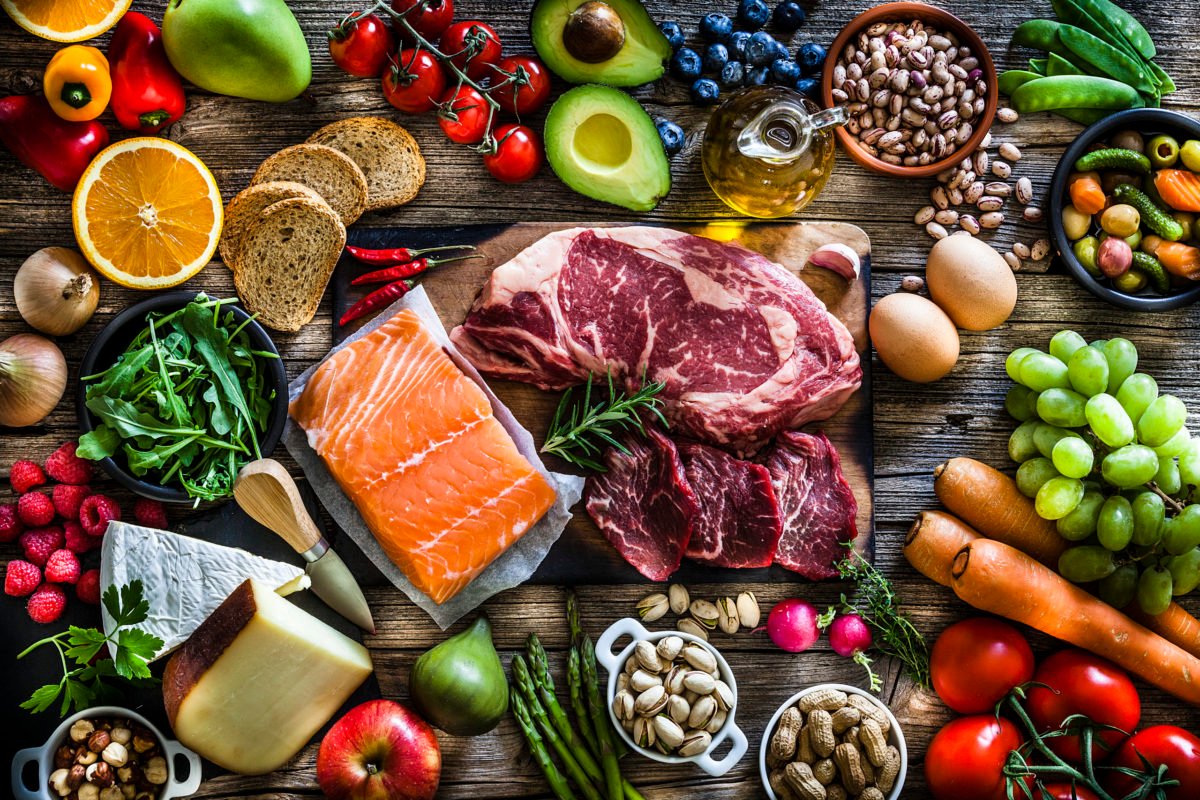
Concept about Food
Food is any substance consumed to provide nutritional support for an organism. Food is usually of plant or animal origin, and contains essential nutrients, such as
- Carbohydrates,
- Fats,
- Proteins,
- Vitamins, or Minerals.
The substance is ingested by an organism and assimilated by the organism’s cells to provide energy, maintain life, or stimulate growth.
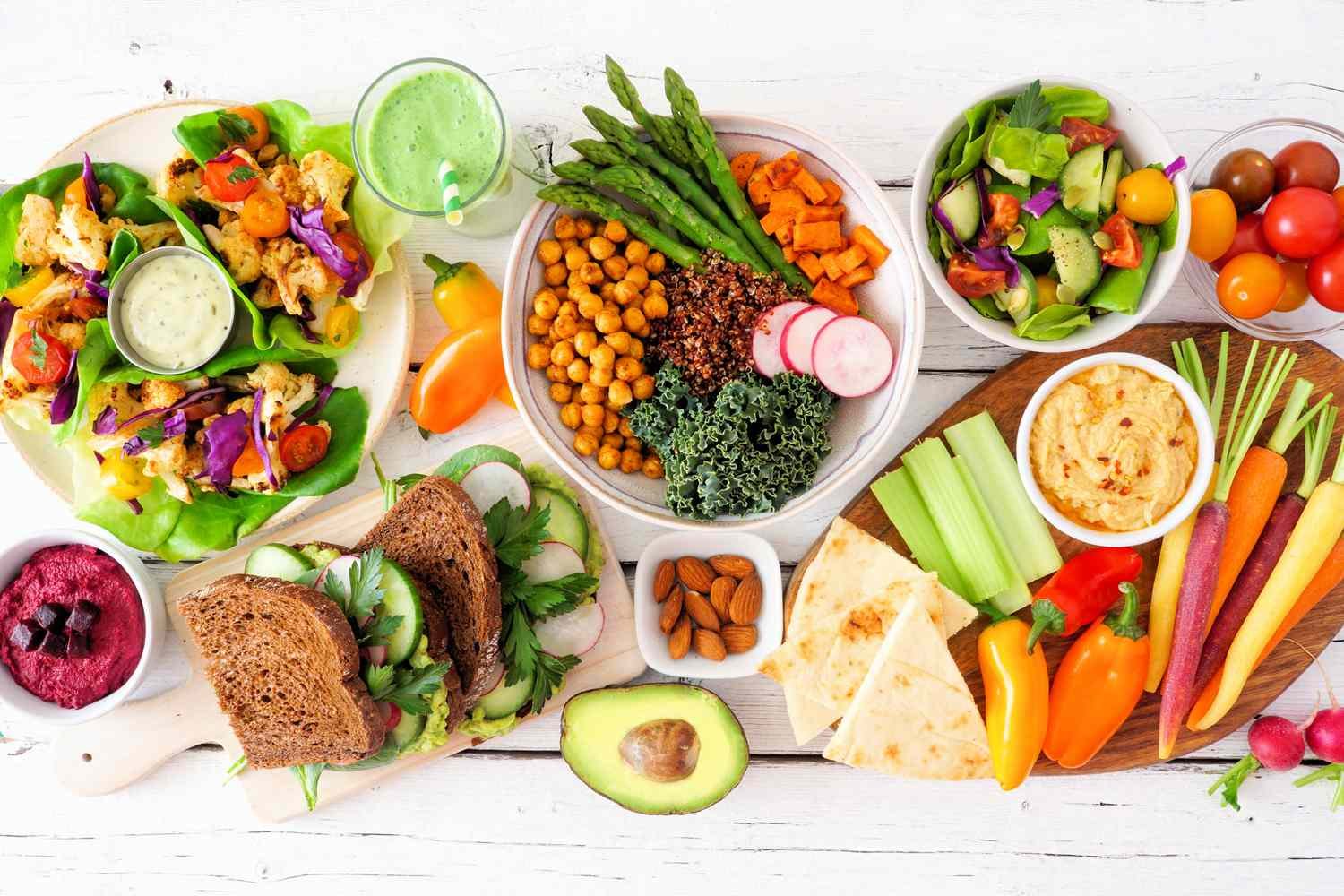
Historically, humans secured food through two methods: hunting and gathering and agriculture, which gave modern humans a mainly omnivorous diet.
Worldwide, humanity has created numerous cuisines and culinary arts, including a wide array of ingredients, herbs, spices, techniques, and dishes.
(Ref by- https://en.wikipedia.org)
Definition of Food:
Food is a composite mixture of substances which when consumed performs certain functions in the body.
[OTHER DEFINITIONS-NICE TO KNOW]
Food is a substance, when consumed gives energy, building and maintain body, protecting from infecting from infection and regulates tissue functions.
(Ref by: RKH/5th/136)
The term ‘food’ refers to anything, which nourishes the body. It would obviously include solids, semisolids, and liquids which can be consumed and which help to sustain the body and keep it healthy.
(Ref by: BT Basavanthappa’s Fundamentals of Nursing/2nd/462)
Food is a substance which when taking into the body well meet the needs for physical and mental, wellbeing.
Functions of Food:
1. Yields energy
2. Helps in building and maintaining the body
3. Protects the body from various types of diseases
4. Regulates the tissue functions.
5. Build and repair the body tissue.
6. Produce heat.
FOR EQ
(Ref by- R.K.H/5/126)
Functions of Food
The functions of food can be broadly classified into three main categories.
1. Physiological functions of food.
2. Psychological functions of food.
3. Social functions of food.
Physiological functions of food
The physiological functions of food can be further sub-divided as follow:
1. Energy giving.
2. Body building.
3. Regulatory and protecting functions of food.
a) Energy giving: The body needs a constant supply of energy to carry out the involuntary processes of which we are not even aware, like, respiration, circulation of blood etc. which are essential for continuance of life. Energy is also required to carry out voluntary activities like professional, household and recreational activities, which every human being indulges in like, either jumping, walking, playing etc.
Besides this some amount of energy is also required to convert the ingested food into usable nutrients in the body and the heat released during this process helps to keep the body warm. Energy is mainly provided to our body through carbohydrates and fats in the food. Rich sources of carbohydrates are cereals, sugar, jiggery, potatoes, honey etc. Good Sources of fats include ghee, oil, nuts etc. A major part of our daily diet is constituted by these energy-rich food materials.
b) Body Building: The foods we eat become a part of us. Thus one of the most important functions of food is that of building the body. A newborn body weighting 2.7-3.2 Kg. Can grow to its potential adult size of 55-70 Kg., if right kinds and amounts are eaten from birth to adulthood, In adult life, the food eaten each day helps to maintain the structure of the adult body, and to replace worn out cells of the body.
c) Regulatory and Protective function: The third physiological function of food is to regulate the activities of the body. It includes regulation of such varied activities as beating of the heart, maintenance of body temperature, muscle contraction, control of water balance, clotting of blood, removal of waste products from the body etc. For any of these processes, one or the other nutrients is responsible.
For example Vitamins of the B groups are an integral part of the enzymes and are responsible for metabolizing food and thus release energy. Vitamin K is an essential factor in clotting of blood.
The Psychological Functions of food
The second major function of food is the psychological function. Food must also satisfy certain emotional needs. These include sense of security, love and attention. Everyone grows in a particular culture with its own unique food habits of that culture and caste.
The person begins to associate the food habits and foods commonly consumed by him, as it gives him a sense of security and satiety. The foods daily eaten by us, give us more mental satisfaction, even a nutritional balanced meal may not be satisfying to the individual, if food include is unfamiliar or distasteful to him/her.
In a friendly gathering, one may try unfamiliar foods and thus enlarge our food experiences. During the course of time and repeated experience, strange foods become familiar and new tastes are formed. These new taste are developed should again be satisfying to the mind. For example, a person accustomed to traditional Indian cusine, takes time to adjust to Chinese or western dishes, but feels mentally satisfied at the site of familiar foods.

Social function of Food
Food and eating has significant social meaning. Share food with any other person implies social acceptance. When you share a meal with anyone else, you are expressing your acceptance of friendship and respect for that person. Earlier only persons enjoying equal status in society eat together. A person would never share a meal with someone inferior to him in social terms.
Food is also a symbol of our social life. Food is a medium through which we express our happiness. For example, feasts are given at specific states of life, such as birth, mundane ceremony, birthday, marriage etc. Sweets are also distributed and exchanged to mark certain auspicious occasion like festivals.
Food is the common link in a meeting, party or get-together that attracts people to come to such social gatherings. Refreshment served even at officials meeting creates a relaxed atmosphere, where people can exchange their views. The menu for such get-to-gather should bring the people together, rather than divide them. Foods help to strengthen mutual friendship.
For example, inviting friends and relatives over meals signify acquaintance and hospitality. Food also has a specific significance and meaning in the religious context. Certain food items such as fruits, sweets, and coconut are offered to the deity in temples. Often sweets are prepared at temples and gurudwaras and distributed to devote as a benediction or prasad.
Classification of Foods:
Foods are classified in different ways
| 1. Classification by predominant function: |
|
| 2. Classification by origin: |
|
| 3. Classification by chemical composition: |
|
| 4. Classification by nutritive value: |
|
(Ref by: K. Park/24/647)
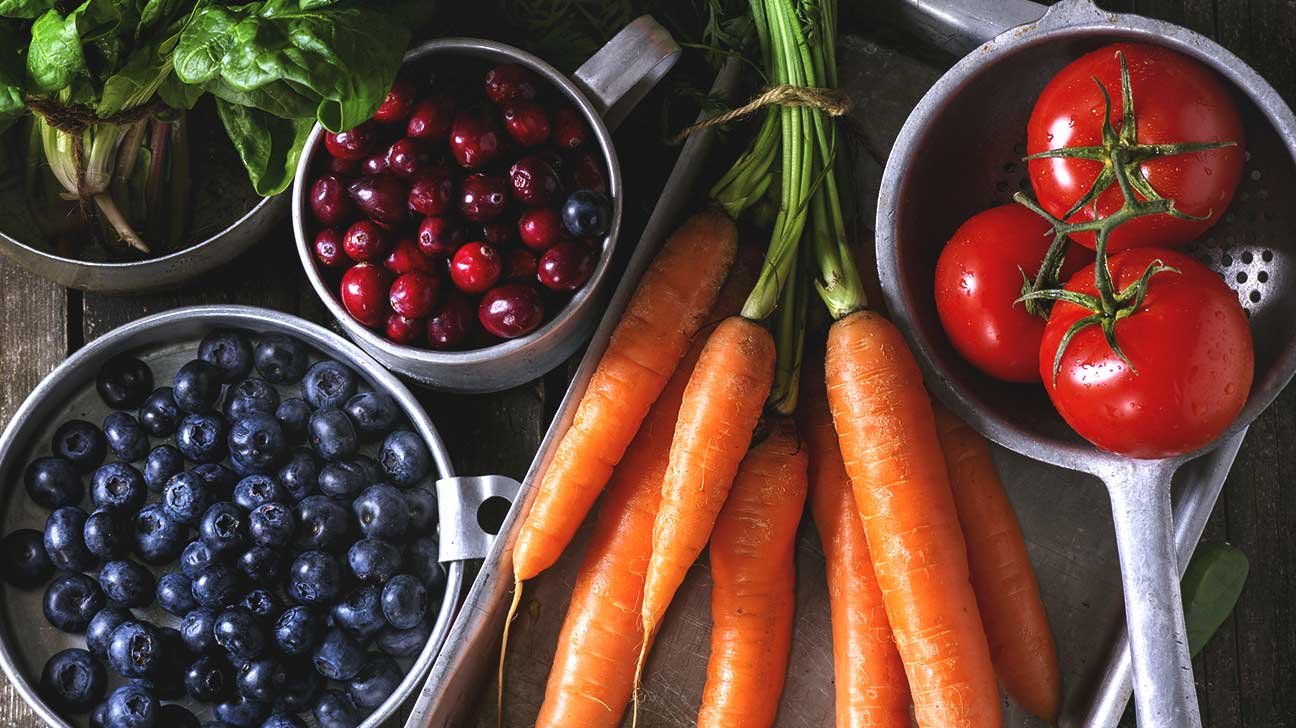
Components of Food:
1. Carbohydrates: Rice, wheat, corn, maize, liver etc.
2. Proteins: Meat, fish, egg, milk, legumes, beans etc.
3. Fats: Cooking oil, ghee, butter and animal fat.
4. Vitamins: Vegetables and fruits, egg, milk, liver etc.
5. Minerals: Vegetables and fruits, animal and vegetable protein, common salt and water.
6. Water: Safe water.
(Ref by: Lecture note)
Proximate Principles of Food:
- Protein : 7-15%.
- Fat : 10-30%
- Carbohydrate : 65-80%
They are often called proximate principles food because they form the main bulk of food.
- Rice: Protein absent
- Milk: Ideal (Dietary fiber absent)
- Pulse: Carbohydrate absent
- Egg: Carbohydrate absent
Sick People Need Food Because:
During infections the body uses as many calories and nutrients as normal. The need for some nutrients may increase; for example, the body may use more energy if there is fever. Micronutrients such as vitamin A and zinc that help to destroy free radicals may be particularly important.
But during infection the body often gets less energy and nutrients than it uses. This is because:
- People who are ill often eat less than usual
- Gut may absorb less nutrients during diarrhoea
If the body does not get enough food it breaks down its own fat and muscle to supply the nutrients that it needs. This is why people often lose weight when they are ill and look thin. Children may stop growing.
(Ref by: Nutrition for Developing Countries/2/155)
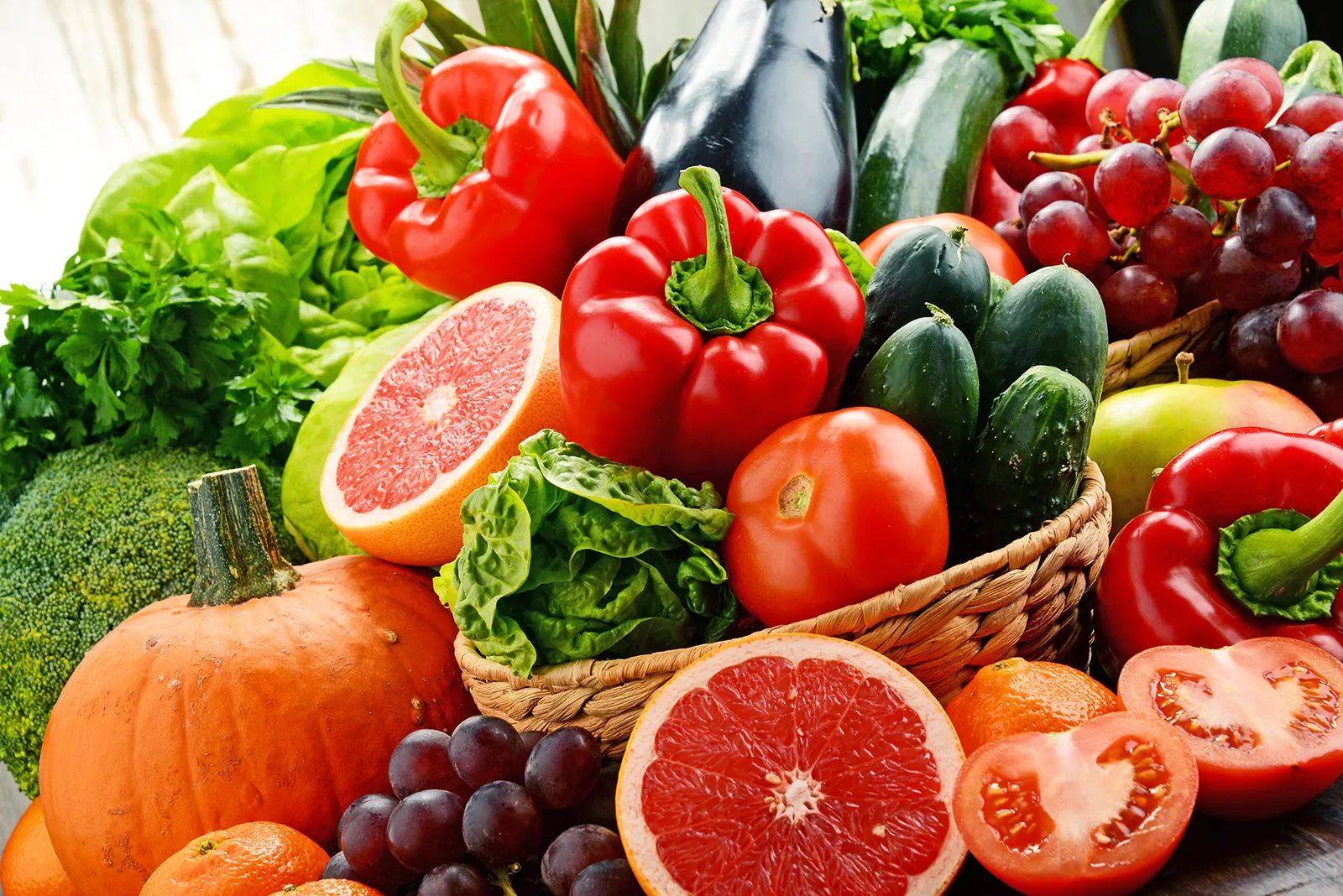
Factors Influence Food Intake:
| 1. Flavor, taste, smell texture and appearance of food | |
| 2. Demographics factors: |
|
| 3. Culture and religion factors |
|
| 4. Other factors: |
|
| 5. Environmental factors |
|
| 6. Health: |
|
| 7. Food industry and media role: |
|
| 8. Social and emotional influences: |
|
(Ref by: K. Park/24h/648)
Read more:
